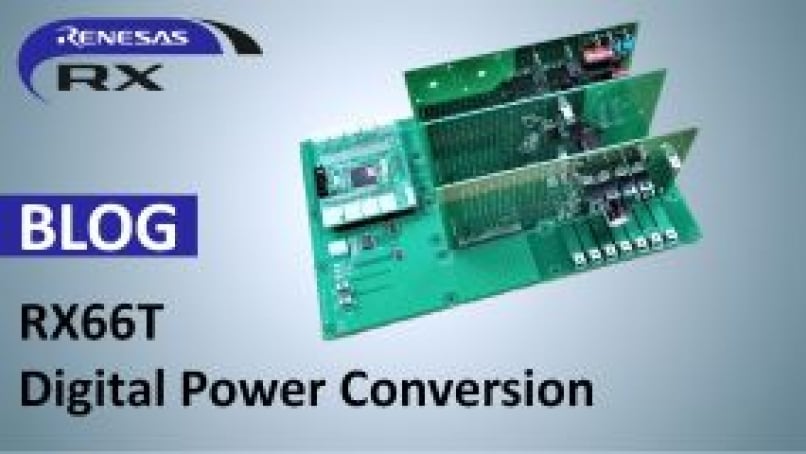Under recent events like the Ecodesign Directive (ErP) of the European Commission and last year’s energy crisis, interest and effort toward energy conservation, such as reducing standby power consumption, are gaining attention as one of the product values.
As a matter of fact, MCUs, which consume high power in an embedded system, are required to reduce power consumption and I think many customers are utilizing low-power consumption modes to address the need.
However, some developers may have faced difficulties on reducing power consumption to meet the required figures and didn’t know the reason.
Most MCUs used now a days are likely to incorporate low-power consumption functionalities in hardware. The RX MCUs support various low-power consumption modes addressing various applications and specifications as shown in Table 1.
| Low power consumption mode | Oscillator | Peripheral module | RAM | Power reduction ratio | Return time |
|---|---|---|---|---|---|
| Sleep | Operable | Operable | Operable (Hold) | Low Image
High | Short Image
Long |
| Deep sleep | Operable | Operable | Stopped (Hold) | ||
| All-module stop | Operable | Stopped (Hold) | Stopped (Hold) | ||
| Software standby | Stopped | Stopped (Hold) | Stopped (Hold) | ||
| Deep software standby | Stopped | Stopped (Undefined) | Stopped (Undefined) | ||
| Snooze (Note 1) | Operable | Operable | Operable (Hold) | Equivalent to Software standby | |
Note 1: Snooze mode is a mode that resumes a peripheral’s operation temporarily during software standby mode. It can maintain the power-saving state while performing peripheral function operations intermittently.
For example, in software standby mode, many peripheral modules and oscillators except for the sub-clock are stopped, so power consumption is significantly reduced. On the other hand, as the operable peripheral modules are limited, the wake-up interrupt sources available are also limited, resulting in a longer wake-up time compared to sleep mode. Therefore, low-power consumption modes should be selected carefully according to the system’s needs.
In addition, to minimize low power consumption, relying on hardware’s ability only is never enough, software countermeasures should be considered as well. There are a lot of checkpoints that should be addressed, like stopping unnecessary peripheral functions before transiting to low power consumption modes, lowering clock frequencies, setting each pin to proper condition, such as high output to pull-up pins, to lower power consumption.
From these points of view, the application note describes possible reasons on why power isn’t reduced, points that should be taken care of, and our know-how of low power consumption implementation.
Furthermore, for the target devices listed in Table 2, Renesas provides the ready-to-use sample programs for checking the current consumption of each low-power consumption mode. Users could evaluate by downloading the sample program to the corresponding Renesas Starter Kit and switching between low-power consumption modes to confirm the current consumption. If you have a board other than Renesas Starter Kit or an MCU other than the target devices, you could implement the low power consumption by referring to this application note.
| Mode | Device (〇: Supported, -: Not supported) | |||
|---|---|---|---|---|
| RX130 Group | RX140 Group | RX231 Group | RX65N Group | |
| Sleep | 〇 | 〇 | 〇 | 〇 |
| Deep sleep | 〇 | 〇 | 〇 | - |
| All-module clock stop | - | - | - | 〇 |
| Software standby | 〇 | 〇 | 〇 | 〇 |
| Deep software standby | - | - | - | 〇 |
| Snooze | - | 〇 | - | - |
For example, as shown in Table 3, the application note provides a typical example using a real-time clock alarm interrupt in addition to an external pin interrupt resume from low power modes, which is widely used in practice.
| Peripheral Function | Function |
|---|---|
| Low power consumption function | Reduce power consumption |
| External pin interrupt (IRQ) | Transition to low power mode and resume from low power mode |
| Realtime clock (RTC) | The current value is measured when using RTC (Note 1), Resume from low power mode by RTC alarm interrupt (Note 2) |
| I/O ports | Control switch and LED |
Note 1. Used only in software standby modes that use the RTC.
Note 2. Used only in deep software standby modes that use the RTC
We highly recommend you refer to the application note when implementing low-power consumption with our RX MCU. You will gain more understanding of low-power modes on RX MCU, and it will help you to implement them in your application smoothly.
For Your Information
